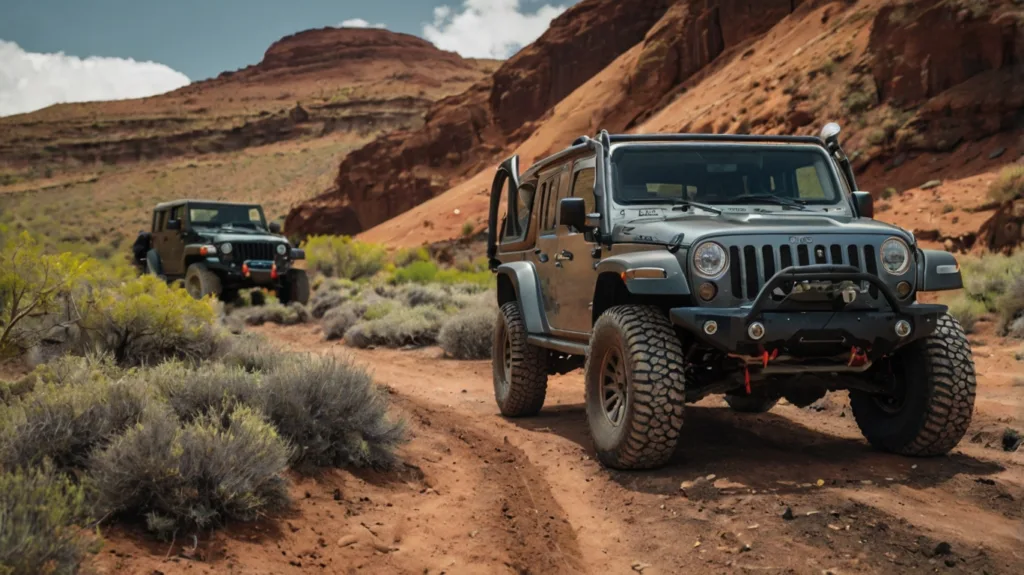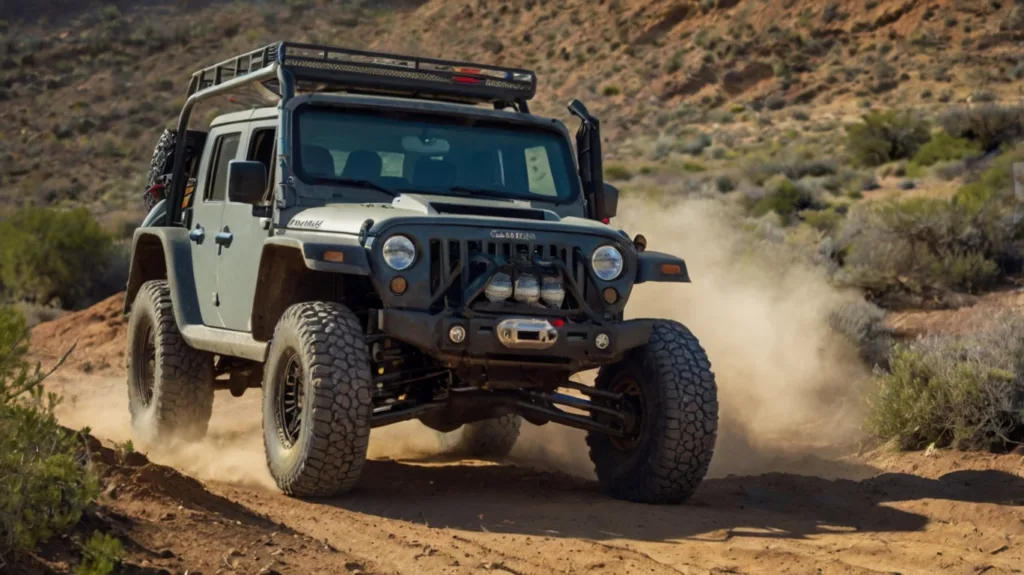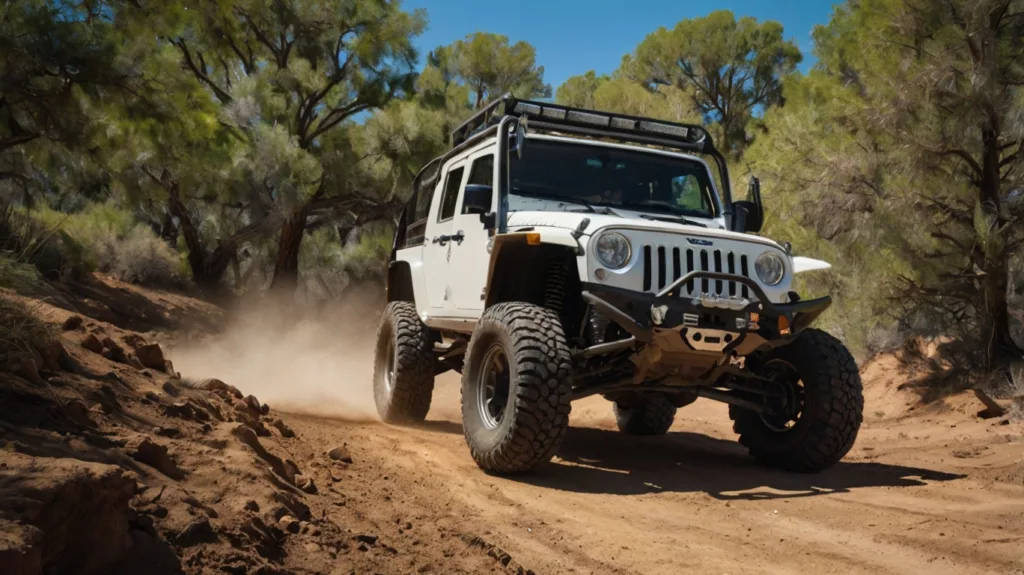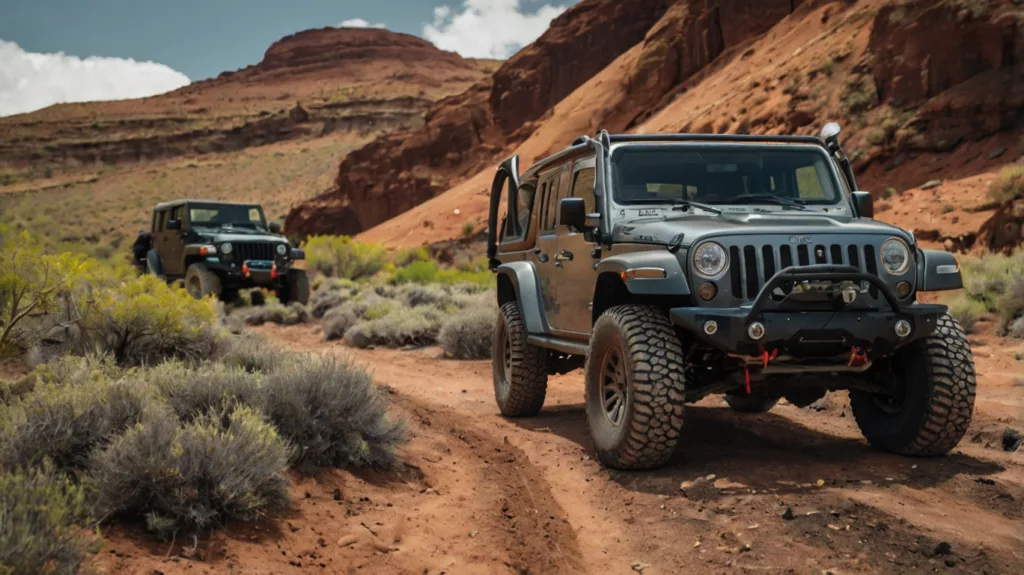Off-road vehicle maintenance is essential for performance and safety. Regular checks and care extend your vehicle’s lifespan.
Off-roading presents unique challenges for vehicles, from muddy tracks to rocky terrain. Adequate maintenance ensures that enthusiasts can enjoy the thrill of the adventure without unexpected breakdowns. It includes routine checks on engines, suspensions, tires, and protective gear. Investing in periodic professional inspections can uncover potential issues before they escalate into costly repairs.
For adventure seekers who rely on their off-road vehicles, understanding and performing consistent maintenance is as crucial as the vehicle itself. With a focus on durability and reliability, maintaining an off-road vehicle demands attention to detail and a proactive approach to vehicle care.
Off-road Vehicle Maintenance Essentials
Welcome to the rugged world of off-road vehicles, where the trails are tough and the maintenance is key. Keeping your vehicle in top condition ensures both safety and performance. Let’s dive into the essentials of off-road vehicle maintenance that will keep the adventure going.
Routine Cleaning And Inspection
Clean your vehicle after every rough and tumble outing. Mud and debris can hide issues. Here’s a quick checklist:
- Examine the undercarriage: Look for damage or debris.
- Check the tires: Look for cuts and wear.
- Inspect the brakes: Ensure they respond well.
- Review all lights: Replace any that are dim or out.
- Test the suspension: Check for unusual noises or loose components.
Regular Oil And Filter Changes
Changing oil and filters is critical for engine health. See the table below for a basic schedule:
| Component | Recommended Change Interval |
|---|---|
| Engine Oil | Every 3,000 to 5,000 miles or as per manufacturer’s guidance |
| Air Filter | Every 15,000 miles or when visibly dirty |
| Fuel Filter | Every 30,000 miles |
Remember to use the right oil grade. A higher-grade oil may protect better for off-road conditions.
Tires And Traction Management
Every off-road enthusiast knows the heart-thumping thrill of conquering rugged landscapes. Yet, this adventure relies on robust vehicle maintenance, especially when it comes to tires and traction management. Keeping your tires in top condition is key. Proper care ensures you maintain grip, control, and safety as you navigate through challenging terrains. Let’s buckle up and dive into the essentials of tire maintenance and choosing the best tires for your off-road escapades.
Checking Tire Pressure And Tread
Maintaining the right tire pressure is vital for traction. Regularly checking tire pressure helps your vehicle handle better. It also prevents tire wear and increases fuel efficiency. Use a reliable tire gauge to check pressure before and after any off-road adventure. An equally important aspect is tire tread depth. Adequate tread depth is critical for maintaining traction on slippery or rough surfaces. You can measure this using a tread depth gauge.
- Use a tire gauge for accurate pressure readings.
- Monitor tread wear patterns regularly.
- Follow manufacturer’s guidelines for pressure levels.
Choosing The Right Tires For Terrain
Selecting the right tires for specific terrains can make all the difference. Each off-road environment demands tires designed for that landscape. Whether it’s muddy trails, rocky paths, or sandy dunes, the correct tire ensures better performance and traction. Below is a simple guide to help identify which tires match different terrains:
| Terrain Type | Tire Choice |
|---|---|
| Mud | Deep tread patterns for grip |
| Rocks | Reinforced sidewalls for puncture resistance |
| Sand | Wider footprint for flotation |
Consider seasonal changes and weather patterns when choosing tires. Winter tires are different from those you’d use in dry summer conditions. Always select tires based on the most challenging terrain you plan to tackle.

Suspension And Undercarriage Care
Regular maintenance of your off-road vehicle’s suspension and undercarriage is not just about keeping it looking pristine. It’s essential for ensuring a smooth ride and longevity of your vehicle. Rocks, dirt, and debris can wreak havoc on these vital components. Understanding how to care for them can save you from costly repairs.
Suspension System Checks
To keep your off-road journey steady and safe, here are the checks you need:
- Inspect shocks and struts for leaks or damage.
- Check the tightness of bolts and mountings.
- Examine springs for signs of wear or fatigue.
- Assess the steering and alignment regularly.
- Don’t forget a test drive post-inspection.
Undercarriage Cleaning Tactics
A clean undercarriage prevents rust and keeps parts moving. Use these tactics:
- Use a low-pressure water spray to remove loose dirt.
- Apply a degreaser for tough grime.
- Target mud-caked areas with a soft brush.
- Rinse thoroughly with water.
- Allow to dry completely before hitting the road again.
Brakes And Safety Systems
Maintaining your off-road vehicle is critical for any adventure. Brakes and safety systems demand special attention. To keep the thrill of off-roading alive, ensure these systems are in top condition. It’s not just about performance; it’s about keeping you safe on varying terrains. Remember, the right maintenance equals fewer surprises and more control when you’re out on the trails.
Brake Pad Wear And Tear
Brake pads are vital for vehicle control. Over time, they wear down. Heavy off-road use accelerates this process. Regular checks help identify when replacements are due. Look for these signs:
- Screeching or grinding sounds
- Longer stopping distances
- Brake pedal feels soft or spongy
Inspect brake pads for thickness. Thin pads can’t grip the rotors effectively. This increases stopping distances. Always replace pads before they reach this point.
Ensuring Proper Function Of Safety Features
Your off-road vehicle’s safety features are your best allies. They protect you from unforeseen risks. To ensure they function properly:
- Test safety features regularly
- Check the operation of anti-lock brakes (ABS)
- Verify stability and traction control systems
- Inspect airbags for any warning signs
Consult the owner’s manual for guidance on checks and intervals. Follow the recommended schedule for servicing and updates. A well-maintained off-roader is a safer one.
Engine And Drivetrain Health
Regular maintenance of your off-road vehicle’s engine and drivetrain is essential for peak performance. These components are the heart and muscle that power your adventures. Be vigilant with the upkeep to ensure longevity and reliability when conquering rough terrains.
Air Filter Maintenance
A clean air filter is crucial for efficient engine performance. It allows your engine to breathe and prevents harmful debris from causing damage. Follow these steps to maintain your air filter:
- Inspect the air filter regularly, especially after dusty rides.
- Clean or replace the air filter according to the manufacturer’s guidelines.
- Ensure a proper seal when reinstalling the air filter to prevent unfiltered air from entering the engine.
Drivetrain Component Lubrication
Lubrication is vital for the drivetrain, reducing friction and wear on moving parts. Here’s how to lubricate these components:
| Component | Lubrication Frequency | Type of Lubricant |
|---|---|---|
| Chain | After every ride | Chain-specific lube |
| U-joints | Every 500 miles | Multi-purpose grease |
| CV Joints | As needed | High-performance grease |
Always use the recommended type of lubricant for your specific vehicle. Regular lubrication maintains optimal functioning and extends component life.

Electrical Systems And Accessories
Electrical Systems and Accessories are vital for any off-road vehicle. They ensure that the vehicle starts without a hitch and keeps running in the toughest terrains. Proper maintenance of these systems is crucial for a hassle-free off-road adventure. Dive into the essentials of keeping your vehicle’s electrical components in top shape.
Battery Maintenance For Reliable Starts
A strong, well-maintained battery is the heart of any vehicle’s electrical system. To keep your starts reliable:
- Inspect battery terminals for corrosion. Clean them regularly.
- Ensure battery connections are tight and secure.
- Test the battery’s voltage periodically.
- Keep the battery surface clean and dry.
Navigational And Lighting System Checks
Lights and navigation systems guide you through the wild. To ensure they work when needed:
- Check all lights before each trip. Replace any burnt-out bulbs.
- Test navigational equipment. Update software as needed.
- Review wiring for signs of wear. Secure any loose connections.
- Carry spare fuses and bulbs for emergencies.
Seasonal Adjustments And Storage
As seasons shift, your beloved off-road vehicle demands attention to thrive in changing conditions. Whether it’s beating the heat or braving the icy touch of winter, appropriate seasonal adjustments and storage techniques are vital for vehicle longevity. Understanding the nuances will ensure your rig is ready for action year-round.
Preparing Your Vehicle For Different Climates
- Winter:
- Switch to thicker oil; it performs better in cold.
- Inspect tire treads and consider winter-specific tires.
- Ensure the antifreeze level is adequate.
- Summer:
- Check coolant systems; overheating is a risk.
- Opt for lighter oil, a summer-grade blend works best.
- Apply UV-protectant to prevent dash damage.
- Spring/Fall:
- Test your battery; temperature shifts impact its charge.
- Monitor tire pressure as it fluctuates with temperatures.
- Examine windshield wipers for wear from seasonal debris.
Long-term Storage Best Practices
Storing your off-road vehicle for extended periods requires careful preparation. Follow these steps to protect your vehicle:
- Clean thoroughly: Dirt and moisture lead to corrosion.
- Top off fluids: Full tanks prevent moisture accumulation.
- Disconnect the battery: It avoids power drain.
- Choose a dry, covered area: This shields against weather damage.
- Use fuel stabilizer: It prevents fuel degradation.
- Inflate tires properly: This combats flat spots.
- Seal openings: Keep pests out of exhausts and intakes.

Frequently Asked Questions On Off-road Vehicle Maintenance
How Often Should Off-road Vehicles Be Serviced?
Regular maintenance schedules vary per vehicle, but generally off-road vehicles require service every 3,000 to 5,000 miles. Frequent inspections are vital due to harsh driving conditions. Always consult the owner’s manual for specific guidance.
What Are Common Off-road Vehicle Maintenance Tips?
Keep air filters clean to prevent engine damage and maintain tire pressure for optimal traction. Regularly check fluid levels and inspect brakes and suspension for wear. These steps are crucial for safe and reliable off-road driving.
Can Off-road Driving Affect Engine Performance?
Yes, off-road driving can stress the engine, leading to quicker oil contamination and potential overheating. It’s crucial to monitor engine performance and ensure timely oil changes to mitigate these risks.
What To Check Before An Off-road Adventure?
Before heading out, inspect your vehicle’s fluid levels, tire pressure, brakes, and suspension. Also, ensure your headlights and indicators are functioning properly. A thorough check can prevent unexpected issues during your off-road excursion.
Conclusion
Maintaining your off-road vehicle is vital for performance and safety. Regular check-ups preserve its condition, ensuring thrilling adventures ahead. Invest in routine maintenance; your vehicle will reward you with reliability and longevity on the toughest terrains. Take action now and enjoy the uninterrupted journey off the beaten path.


